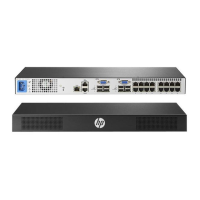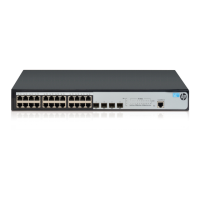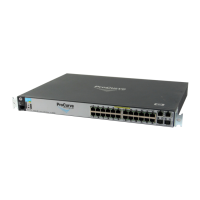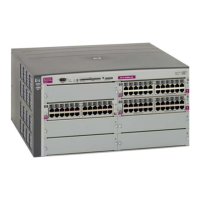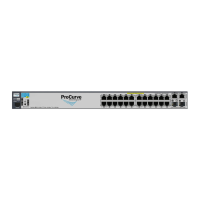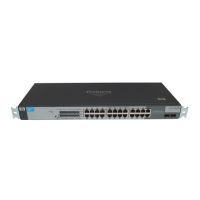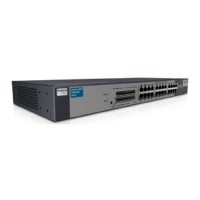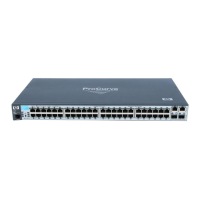Information Menu 52
Command Usage
mrouter Displays the Multicast Router Menu.
find <IP address> Displays a single IGMP multicast group by its IP address.
vlan <1-4095> Displays all IGMP multicast groups on a single VLAN.
port <port number> Displays all IGMP multicast groups on a single port.
trunk <1-12> Displays all IGMP multicast groups on a single trunk group.
dump Displays information for all multicast groups.
IGMP multicast router port information
Command: /info/l3/igmp/mrouter
[IGMP Multicast Router Menu]
vlan - Show all multicast router ports on a single vlan
dump - Show all learned multicast router ports
The following table describes the commands used to display information about multicast routers learned through
IGMP Snooping.
Table 36 IGMP Multicast Router menu options
Command Usage
vlan <1-4095> Displays information for all multicast groups on a single VLAN.
dump Displays information for all multicast groups learned by the switch.
VRRP information
Virtual Router Redundancy Protocol (VRRP) support on GbE2c provides redundancy between routers in a LAN. This is
accomplished by configuring the same virtual router IP address and ID number on each participating VRRP-capable
routing device. One of the virtual routers is then elected as the master, based on a number of priority criteria, and
assumes control of the shared virtual router IP address. If the master fails, one of the backup virtual routers will assume
routing authority and take control of the virtual router IP address.
NOTE: VRRP commands are available only on the GbE2c Layer 2/3 Ethernet Blade Switch.
Command: /info/l3/vrrp
VRRP information:
1: vrid 2, 205.178.18.210, if 1, renter, prio 100, master, server
2: vrid 1, 205.178.18.202, if 1, renter, prio 100, backup
3: vrid 3, 205.178.18.204, if 1, renter, prio 100, master, proxy
When virtual routers are configured, you can view the status of each virtual router using this command. VRRP
information includes:
• Virtual router number
• Virtual router ID and IP address
• Interface number
• Ownership status
• owner identifies the preferred master virtual router. A virtual router is the owner when the IP address of the
virtual router and its IP interface are the same.
• renter identifies virtual routers which are not owned by this device
• Priority value. During the election process, the virtual router with the highest priority becomes master.
• Activity status
• master identifies the elected master virtual router.
• backup identifies that the virtual router is in backup mode.
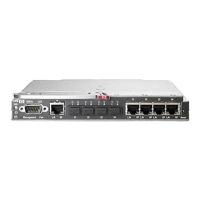
